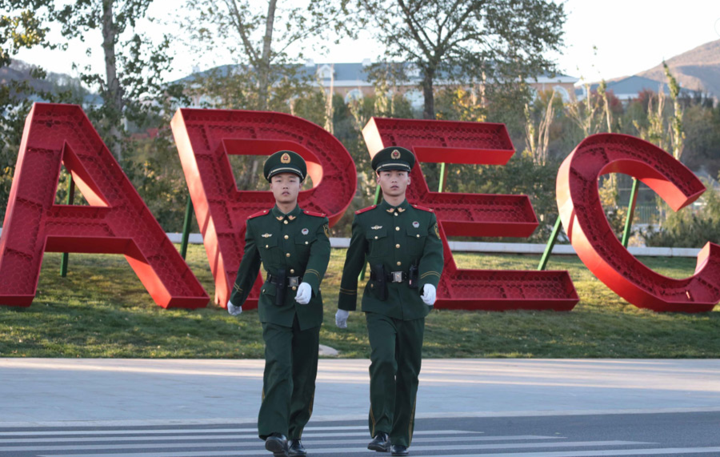Author: Prof. Engr. Zamir Ahmed Awan, Founding Chair GSRRA, Sinologist, Diplomat, Editor, Analyst, Consultant, Advisor, and Non-Resident Fellow of CCG. (E-mail: awanzamir@yahoo.com).
The Asia-Pacific Economic Cooperation (APEC) stands as a testament to the power of economic collaboration in fostering growth, stability, and understanding among nations. Established in 1989, APEC began as a forum to promote free trade and economic cooperation in the dynamic Asia-Pacific region. Today, its membership includes 21 economies, such as the United States, China, Japan, Australia, and Russia, representing a collective force of over 60% of the global GDP and nearly half of world trade.
APEC's Vision and Achievements
APEC's core mission is to promote regional economic integration, reduce trade barriers, and encourage sustainable development. Its non-binding consensus-based approach allows for flexibility, fostering trust and collaboration among its diverse members. Over the decades, APEC has delivered significant achievements, including advancing digital trade, fostering small and medium-sized enterprises (SMEs), promoting green growth, and strengthening supply chains.
Notable initiatives include the Bogor Goals, which aim to achieve free and open trade and investment, and the APEC Connectivity Blueprint, designed to enhance regional infrastructure, institutional, and people-to-people connectivity. These milestones have cemented APEC's reputation as a key driver of regional prosperity.
China’s Perspective and Contributions to APEC
China, as one of APEC's most influential members, has consistently championed its vision of shared prosperity and open cooperation. Chinese leaders have viewed APEC as a vital platform for fostering regional economic integration, reducing disparities, and addressing common challenges. Former President Hu Jintao once emphasized that APEC embodies the spirit of partnership and mutual benefit, urging members to "work together for an open and inclusive Asia-Pacific."
President Xi Jinping has further deepened China's commitment to APEC, advocating for inclusive growth, innovation-driven development, and sustainable progress. His consistent participation and proactive contributions to APEC summits reflect China's strong belief in the forum's potential to create a more interconnected and prosperous region.
The 31st APEC Summit: Key Discussions and China’s Role
The recent 31st APEC Summit, held in Lima, Peru, provided yet another opportunity for member economies to address pressing global challenges. The summit emphasized fostering inclusive growth, enhancing digital transformation, and strengthening supply chain resilience—critical topics in a world still recovering from the economic disruptions of the COVID-19 pandemic.
In his speech, President Xi Jinping highlighted the importance of multilateralism and open regionalism, reiterating China's commitment to global peace and economic stability. He called for greater cooperation among member economies to address challenges such as inflation, technological divides, and climate change. Xi’s speech reflected China's belief that economic prosperity should be inclusive, sustainable, and innovation-driven.
China’s Role in APEC: A Force for Unity and Progress
China’s contributions to APEC have been both substantial and forward-looking. As a global economic powerhouse, China plays a pivotal role in driving regional trade and investment flows. Its Belt and Road Initiative (BRI), often aligned with APEC objectives, has provided infrastructure investment and enhanced connectivity in the Asia-Pacific. China has also spearheaded initiatives to promote green and digital economies, aligning with APEC’s sustainability goals.
At the 31st Summit, China pledged to enhance digital transformation by supporting SMEs in adopting new technologies and fostering cross-border e-commerce. This initiative underscores China's belief that technological advancement should benefit all, reducing inequalities within and among economies.
Looking Ahead: China’s Future in APEC
China's forward-looking approach positions it as a cornerstone for APEC's continued success. As the region faces evolving challenges—climate change, technological disruptions, and geopolitical tensions—China’s role as a stabilizing and progressive force will be indispensable.
President Xi has repeatedly underscored the need for win-win cooperation. He envisions APEC as a platform where member economies can "achieve mutual benefits through interconnected development." Looking ahead, China is likely to focus on:
Sustainability: Advocating for green economic growth by investing in renewable energy and sustainable infrastructure projects.
Innovation: Driving advancements in AI, digitalization, and technology-sharing initiatives to promote equitable economic growth.
Inclusivity: Reducing gaps between developed and developing economies in the region through trade facilitation and targeted investment.
A Shared Future of Prosperity
APEC's journey continues to be a beacon of hope for regional and global collaboration. China's steadfast commitment to APEC, characterized by openness, inclusivity, and mutual respect, provides a robust foundation for the forum’s future successes. By fostering cooperation and addressing shared challenges, APEC, with China’s active participation, can continue to chart a course toward peace, stability, and prosperity for the Asia-Pacific region and beyond.
As President Xi eloquently remarked at a past summit, “When we pool our strength, no difficulty or challenge can stop the mighty trend of economic globalization.” His words resonate now more than ever, inspiring optimism for a brighter, more connected future where APEC stands as a model of global partnership, and China, a driving force for positive change.
(ASIA PACIFIC DAILY)
